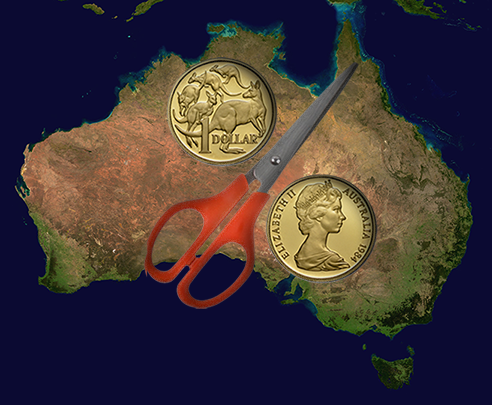RBA Expected to cut rates to 2.00% on April 7th
Along with two thirds of the market, we believe the Reserve Bank of Australia will cut the official cash rate by 25 basis points when they meet after the Easter long weekend, on Tuesday April 7th. The official cash rate will drop to an all time low of 2.00%.
Retirees who rely on interest as a source of income, will not be happy. The interest they earn on their savings has fallen by more than 72% since 2008, when the official cash rate was 7.25%. At a rate of 2.00% it is unlikely that term deposits will keep pace with inflation.
Those of us who have variable rate debts, such as home loans, will benefit from the rate cut. A reduction in our monthly interest means we can either make smaller payments, or pay our debt off faster (or a combination of both). You can see what impact the rate cut will have on your mortgage, with our repayment calculator
A recent history of Australian Interest Rates
The chart below shows how the RBA has moved our cash rate since the February 2000
Why do we believe the RBA will cut rates?
The mining boom, which sustained our economy through the GFC is now over. Commodity prices are starting to fall, as is the outlook for growth in the Australian Economy. The Reserve Bank administers Australian monetary policy. We believe they will reduce the interest rates with the intention of keeping Economic Growth within their target range.
It is hoped that when interest rates drop, we will be encouraged to spend more money (and therefore sustain Economic Growth). According to the text books, this works by simultaneously discouraging saving and encouraging borrowing. This means that more money is being spent, which is good news for our GDP.
People will save less - If interest rates are lower, this decrease our marginal propensity to save. If people earn less interest on their savings, they will be less willing to allocate funds to saving, and more likely to use the money on consumption
People will borrow more - The cost of lending will drop. People with variable loans will now have access to extra cash each month, some of which will be spent. People already planning on applying for new loans will be more willing to borrow larger amounts as the cost of borrowing comes down. Some people who planned to borrow down the track, might decide to borrow now.
How much will you save on your home loan?
If interest rates drop by 0.25%, then for every $100,000 you own on your mortgage, you will save $20.83 in monthly interest. That is assuming that the full rate cut is passed on to us. In a previous post, we looked at the lending margin Australian banks make on home loans. We looked at the difference between the RBA cash rate and the average standard variable rate of the big four banks. Our findings are shown below:
As we can see, back in 2007, the average standard variable rate was 1.82% above RBA cash rate. By mid 2013, the gap had grown to 3.42%. This is because banks don't always pass on the full impact of changes to the cash rate. For example, in May 2012, the RBA cut rates by 0.50%, but on average the banks only reduced their lending rate by 0.36%. They passed on two thirds of the cut to customers, and kept a third for themselves as an increased lending margin on their loans.
We can no say whether the bank retained the difference because of increases in their cost of funds, or because they were increasing their profit margin, but we assume it's a combination of the two. Most people do not pay the full standard variable rate and are on a discounted variable rate. While special offers are around from time to time, this discount has usually been at a maximum of 0.70%, and has not increased substantially since 2007.
Want to see how your own bank changed their lending margin since 2007? Have a look at our lending gap calculator. You can compare any two banks to each other or the average.



